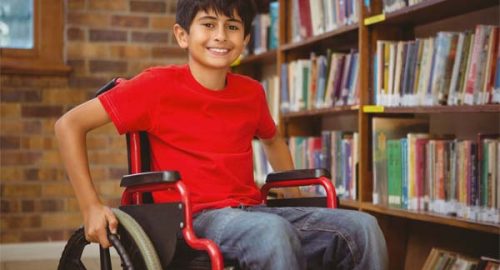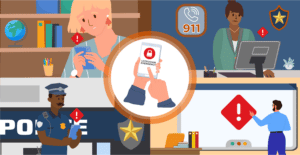Safe and Sound Schools has released their latest program, Especially Safe. The program is designed to help safety planning teams to develop emergency operation plans that are inclusive of all community members. The aim of the program is to move the safety of students, staff, and community members with special needs from afterthought to the forefront of emergency planning and preparation.
Through inclusive planning, districts can create a culture of safety and security for all students, parents, and staff to depend on in emergencies of all kinds.
What is Inclusive School Safety Planning?
Inclusive school safety considers everyone, including students, staff, visitors, volunteers, and contractors. This means having policies for people with temporary disabilities and physical conditions—like pregnant individuals or those with broken bones—as well as policies for those with ongoing needs like PTSD or autism. Inclusive school safety also considers students with Individualized Education Plans (IEPs). Each of these individuals—whether they have short-term or ongoing needs—must have a crisis plan that is specifically designed for them.
Safe and Sound Schools also notes that schools should consider additional needs related to specific groups of people, such as refugees and newly immigrated individuals, gender diverse individuals, persons of color, and those in religious and culturally diverse groups. These individuals can have “cultures, beliefs, and experiences [that] may affect their response to and recovery from crisis.”
How Can Schools Build Inclusive Plans?
When her school had an emergency evacuation, Cassidy Scott, a disabled high school student, was moved to a stairwell where she was left behind in her wheelchair and forced to wait for rescue alone. The experience was traumatic and influenced her mother, Lori Scott, to work on having state legislation passed that requires school safety plans for those like Cassidy.
According to the program, there are six steps to creating inclusive school safety plans. You can download the full program on the Safe and Sound Schools website, including templates and checklists to help you throughout the planning process.
- Gather the Team
It takes a team of individuals from various disciplines and backgrounds to develop a school emergency operations plan (EOP) that can keep everyone safe. This team should include appropriate students, staff, guardians, first responders, disability advocates, mental health providers, and other critical stakeholders in the school community. Safe and Sound Schools developed the TEAMS Framework, which lists five key categories schools should consider when planning for those with special needs:
- Transportation and Mobility
- Emotional, Mental, and Behavioral Health
- Auxiliary Communication
- Medical Health
- Security and Supervision
- Identify Individuals’ Needs
Safe and Sound Schools recommends starting with the Special Education and English Language Learning program participants but notes that it’s critical to also look outside of these programs. Schools can survey parents and staff, including counselors, social workers, and nurses, to identify if other community members have support needs. Anyone who lists a special need should be contacted and included in the planning process.
- Build Individual Teams
Each person with a special need requires a plan that’s built specifically for them. The school should create a safety team for each individual. This team should include people who regularly engage with the individual, including teachers, nurses, bus drivers, and parents. - Create Individual Safety Plans
The program includes an Individual Safety Plan (ISP) template to help schools organize the planning process and consider various emergency scenarios. The template captures what special needs the individual has and what emergency protocols should be considered in the ISP (i.e., does the student need a policy for earthquake response?). - Share the Plan
Everyone who works with the individual—and even those who may interact with the individual—during an emergency needs to know the ISP. This includes substitute teachers, parents, staff, and first responders. The program recommends schools contact these individuals at least once a year to confirm they should still be involved in the ISP. Sharing the ISP is allowable under FERPA.
- Review and Adjust
The school should review each ISP at least once a year. This review can be part of the IEP/504 annual review meeting, if applicable. The program also recommends the school review the ISP whenever needs change or when a student transitions schools. Just like the EOP, the ISP is a living document that needs to be reviewed and revised to continue meeting the needs of the community.
Proud Partners of Safe and Sound Schools
Raptor is proud to be a partner of Safe and Sound Schools, working together to deliver on our shared mission to protect every child, every school, every day. Trusted by over 35,000 K-12 schools nationwide, the Raptor School Safety Suite integrates visitor, volunteer, and emergency management software to help schools manage every aspect of safety.
To learn more about Raptor and to schedule a personalized demo, contact us today.





